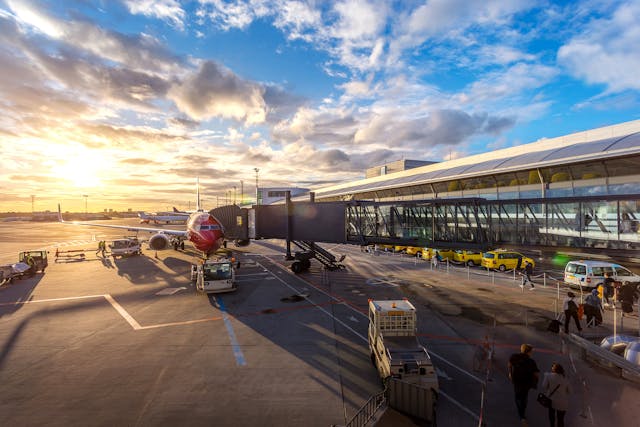Modern technology is transforming aviation, and you can expect faster travel as well as safer, cleaner travel. Novel ideas are changing your flight, and this piece highlights seven major aviation developments. Everyone enhances your trip in different ways while the future seems bright from smart systems to environmentally friendly energies.
Sustainable Aviation Fuel Sources
SAFs lower environmental impact in aircraft by using used oils and plant waste that operate with current airplane engines. Airlines are using them to lower pollution, making your flights cleaner and less polluting while production turns garbage into gasoline. This helps sustainability without altering aircraft designs, and airports are modernizing to handle SAFs with wider usage expected going forward.
These fuels are environmentally friendly yet maintain performance while research keeps making their availability better. SAFs provide a sensible first step toward more environmentally friendly flying, allowing you to travel with less carbon impact. Sustainable aircraft travel depends on this type of innovation.
Advanced Tools for Pilot Communication
In aviation, clear communication is crucial, and new instruments are helping pilots connect with air traffic control through contemporary headsets that provide robust noise suppression and crisp sound. These characteristics assist in cutting distractions during flights, particularly in noisy cockpit environments – for extended flights, for example, a reliable headset from Pilot John International lets pilots comfortably hear instructions.
Apart from improved technology, software technologies assist pilots in more efficient management of their communication through text-based communications between pilots and ground control, sometimes known as CPDLC. It helps flight planning and lowers the possibility of misreading directions while these instruments ensure that communications are received and interpreted, supporting safe operations. Communication systems will change as airplanes get more connected, but the objective remains the same: maintain clarity of information and lower the flying mistake risk.
Autonomous Flight Systems
Aviation is developing autonomous flying technologies that will provide you with AI-guided airplanes, as these devices greatly ease the pilot’s job while flight circumstances are monitored via sensors. You can expect safer and more seamless travel, and cargo drones are already using autonomous technology, while passenger planes could later adopt it.
AI helps prevent risks and maximize paths, and with good preparation, you can observe fewer delays. Ground activities are also starting to be mechanized – for instance, AI systems are used in luggage handling, making airport procedures speedier. Laws are changing to guarantee safety while testing keeps autonomous systems dependable, and this device will help you travel effectively. This creativity helps define a better aviation future.
Biometric Technology for Airports
Biometric technology streamlines your airport visit as you check in using face or fingerprint scans that quicken boarding and security procedures. Physical tickets are vanishing from use, and you will get through airports faster while systems very precisely check your identity. Face scans, for instance, match databases and reduce your time in queues.
Biometric applications also track your bags and send real-time bag locations to you while reduced fraud threats help improve security. Important airports are using this technology, and you will discover it shortly at terminals with privacy controls protecting your information. This inventiveness makes travel safe and easy, ensuring your airport trip will go without trouble.
Artificial Intelligence in Operations
Artificial intelligence (AI) simplifies flying through optimal flight plans that help you, as AI uses data analysis to map sensible paths. This lowers delays and fuel consumption, meaning you’ll find more on-time flights, while AI in predictive maintenance helps identify problems. This keeps aircraft dependable and safe, and you will also find better client service through AI chatbots that instantly respond to your inquiries.
They provide customized travel updates, while precision in air traffic control comes from artificial intelligence, making the busy sky show more seamless activities. Airlines use artificial intelligence for regular chores, improving your trip experience generally, while AI guarantees effectiveness throughout aviation systems. You can expect faster and smarter flights as this technology stimulates a more dependable sector.
Advanced Materials for Aircraft
Advanced materials make planes lighter and stronger, creating fuel-efficient airplanes that help you while composites and graphene replace heavy metals. These materials increase speed and aerodynamics, making flying smoother and quicker as manufacturers build wings and fuselage from them. This lowers maintenance expenses over time, and you will see better designs in quieter cabins.
Studies of sustainable and long-lasting materials abound, and these improvements make planes greener while you can expect better and safer travel as well as increased efficiency. This creativity advances long-term aviation objectives, allowing you to soar aboard a futuristic aircraft.
Hypersonic and Supersonic Flight
Hypersonic and supersonic planes promise faster travel, allowing you to pass continents in hours rather than days. Supersonic aircraft are faster than sound, while hypersonic models go much faster, and you can expect shorter long-distance travel. Businesses are creating high-speed airplanes that give quiet and effective designs priority, benefiting you with shortened journey times.
Tests are in progress for sustainable fuels, making the environmental influence minimal while these aircraft will find commercial applications not too far off. Rules are changing to fit fast flying, and safety remains a major issue for development, while reliability can be trusted from thorough testing. This creativity redefines travel throughout the world, allowing you to reach places quicker than before.
Conclusion
There will be fascinating developments in aviation through sustainable fuels reducing emissions for greener travel and autonomous systems boosting efficiency and safety. Biometric technology accelerates airport operations. In comparison, artificial intelligence maximizes processes for better travel, advanced materials strengthen and lighten aircraft, and supersonic planes greatly shorten travel times, improving your flying experience.
Add Business Connect magazine to your Google News feed



